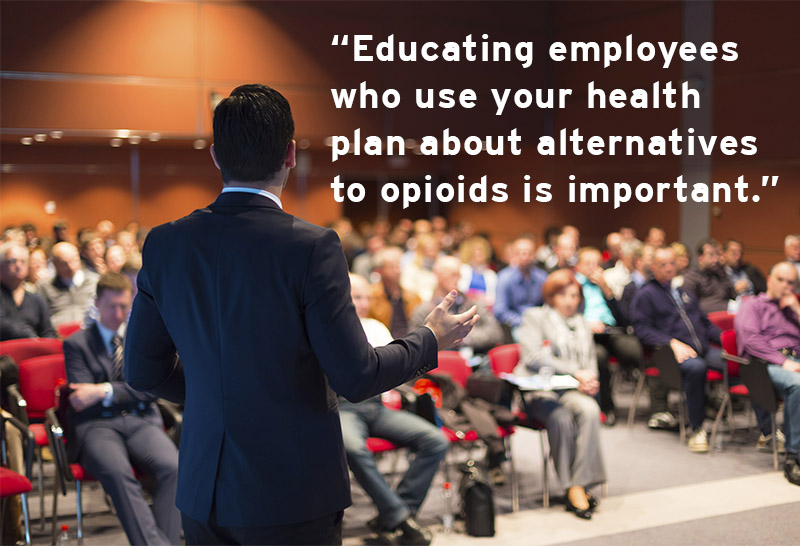
Employer Takeaways from The Alliance’s Opioid Epidemic Summit
[et_pb_section bb_built=”1″][et_pb_row _builder_version=”3.0.92″ custom_margin=”-100px|||”][et_pb_column type=”1_2″][et_pb_image _builder_version="3.0.92" src="http://the-alliance.flywheelstaging.com/wp-content/uploads/2018/07/DSC1257-.jpg" show_in_lightbox="off" url_new_window="off" use_overlay="off" always_center_on_mobile="on" force_fullwidth="off" show_bottom_space="on" /][et_pb_text _builder_version=”3.0.92″ background_layout=”light” text_font_size=”12px” custom_margin=”-20px|||”]
Judge Jodi Switalski
[/et_pb_text][/et_pb_column][et_pb_column type=”1_2″][et_pb_text _builder_version=”3.0.92″ background_layout=”light”]
The written policy is key to acting on substance abuse in the workplace. It impacts every effort you make to cope with substance use and abuse. Update your policy as soon as possible.
– Multiple speakers, including Judge Jodi Switalski
70 percent of youths get opioids and other addictive substances from a family member or the family member’s medicine chest.
– Judge Jodi Switalski
[/et_pb_text][/et_pb_column][/et_pb_row][et_pb_row _builder_version=”3.0.92″ custom_margin=”-100px|||”][et_pb_column type=”4_4″][et_pb_text _builder_version=”3.0.92″ background_layout=”light”]
Employers can work with local law enforcement to hold a Take Back Day to make it easier for employees to safely dispose of unused prescription medicines. Another option is looking for local take back sites. The Drug Enforcement Administration (DEA) National Prescription Drug Take Back Day. External Link. Opens in new window. is Oct. 18, 2018. The DEA’s website offers free educational materials. Employees and family members can also find local sites. External Link. Opens in new window. throughout the year to safely turn in unused prescription drugs in your community. In Wisconsin, the Dose of Reality campaign helps you find “take back” sites.. External Link. Opens in new window.
– Multiple speakers
Simply ending health plan coverage for opioids and other potentially addictive prescription drugs is not a realistic solution to the addiction epidemic, according to Judge Jodi Switalski. She noted that there is a place for opioids, benzodiazepines (benzos) and stimulants in addressing people’s medical conditions. Instead, employers can work with pharmacy benefit managers (PBMs) and other resources to craft policies that help ensure that people’s ongoing usage is at the physical dependency level, rather than progressing to full-blown addiction.
– Judge Jodi Switalski
[/et_pb_text][/et_pb_column][/et_pb_row][et_pb_row _builder_version=”3.0.92″ custom_margin=”-75px|||”][et_pb_column type=”1_2″][et_pb_text _builder_version=”3.0.92″ background_layout=”light”]
When discussing addiction with an employees, always use “I” language to avoid the blame implied by “you” language. It’s more effective to start a conversation with a statement such as “I’m concerned about you” instead of casting blame by saying, “You have a problem.”
– Adapted from Mary Rode, The Write Source
Care from chiropractors and physical therapists has been shown to effectively reduce the use of opioids. Employers may have to change how their benefit plans cover this care to eliminate barriers for employees.
Educating employees who use your health plan about alternatives to opioids is important. For example, employees need help to understand where they can use Exparel® as an alternative to opioids during a surgical procedure.
– Janet Poppe, Pacira Pharmaceuticals, maker of Exparel
[/et_pb_text][/et_pb_column][et_pb_column type=”1_2″][et_pb_image _builder_version="3.0.92" src="http://the-alliance.flywheelstaging.com/wp-content/uploads/2018/08/DSC1355.jpg" show_in_lightbox="off" url_new_window="off" use_overlay="off" always_center_on_mobile="on" force_fullwidth="off" show_bottom_space="on" /][et_pb_text _builder_version=”3.0.92″ background_layout=”light” text_font_size=”12px” custom_margin=”-20px|||”]
Mary Rode (The Write Source) and Laura Monagle (Affirm Agency)
[/et_pb_text][et_pb_image _builder_version="3.0.92" src="https://the-alliance.org/wp-content/uploads/2018/07/DSC1363-1-1.jpg" show_in_lightbox="off" url_new_window="off" use_overlay="off" always_center_on_mobile="on" force_fullwidth="off" show_bottom_space="on" /][et_pb_text _builder_version=”3.0.92″ background_layout=”light” text_font_size=”12px” custom_margin=”-20px||-20px|”]
Alternative Pain Relief Panel
[/et_pb_text][/et_pb_column][/et_pb_row][et_pb_row][et_pb_column type=”4_4″][et_pb_text _builder_version=”3.0.92″ background_layout=”light”]
Learn more about the Opioid Epidemic in the United States
Read these related blog articles:
- The Opioid Epidemic: What’s an Employer To Do?
- “How to Create an Opioid Awareness and Prevention Campaign for your Workplace“
- “Strategies for Employers to Reduce Stigma and Address Opioid Addiction in the Workplace“
[/et_pb_text][/et_pb_column][/et_pb_row][/et_pb_section]







